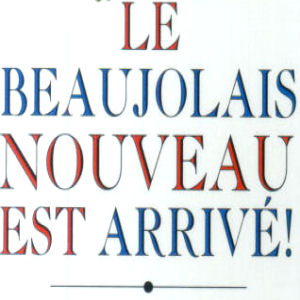Press relations / Public relations
PR are the initials of Press Relations as well as Public Relations. We practice both disciplines. The Press is one the audiences or publics targeted by Public Relations. Press relations are a subset of Public Relations.

Press relations
(PR - establish and maintain relationships with the Press)
Press relations refer to a process that aims at informing journalists, providing them with documentation, providing them with story ideas and/or information angles. Editorial material produced by journalists in the media will have the weight and credibility of what is said by journalists (i.e. objective, investigative, independent, inquisitive, professional, etc.)
Our mission is to help our clients get exposure (e.g. corporate, product, event, results, strategies, satisfied customer testimonials, etc.) in the editorial section of the media on a regular basis—both positively and comprehensively.
There are in fact only two ways to appear in a media—be it print, web, radio, tv:
• through journalist’s articles
• through advertising
Advertising is a communication discipline that is both very close and very different from Press relations. It is very close, physically, for in any ads, media messages and editorial (informative) content tightly coexist. However PR is very different by its methodology, practices… and cost!
Press Relations, it's magic!
The PR approach is much more cost-effective than advertising. In addition, by comparison, PR is extremely flexible, with a high degree of credibility: what you say to one given editor can be finely tuned to the media he/she works for; to his/her understanding of the matter addressed; to the media section he/she is in charge of; to the specific angle he/she has in mind, etc. Applying a PR approach, one need not redesign a costly campaign (advertisement, mailing billboard display) each time you want to pass a message to a target audience. Your just need to speak to several editors!
By comparison with PR, advertising requires higher budgets and is less flexible (i.e. you calibrate one message and post it for millions of people). Advertising credibility is lower: everyone knows that by purchasing media space you have earned the right to say how good your product is. With a PR methodology, audience perception is that an investigative reporter has decided to write about your company, products, strategies, initiatives because he thinks a specific topic willinterest the reader.
Appearing in the editorial section of any publication is free of charge, regardless of the media, its audience, and its prestige. The cost of the editorial service provided by your PR agent is fixed, known in advance... and looks pretty modest when you consider the investment / performance ratio! Press Relations, it's pure magic—with very few resources, you can achieve much (e.g. a two-minute feature in the evening news program).
Public relations
PR are the initials of both Press Relations and Public Relations. We practice both activities.
Public relations is a strategic communication process that builds mutually beneficial relationships between organizations and different audiences that are their public including: employees, members, customers, local communities, shareholders and other institutions as well as with society at large.
Public relations are a communication process that allows an organization or individual to gain exposure to its audiences using topics of public interest and news items that do not require direct payment. The aim of Public relations often is to persuade the public, investors, partners, employees, and other stakeholders to maintain a certain point of view about an organization or individual, its leadership, its products, and/or its political decisions. Common activities include speaking at conferences, winning industry awards, organizing events, working with the press, employee communication, and participation in social networking.
Public relations encompasses the communication processes used by organizations (companies, trade unions, political parties, regions, cities, interest groups) to inform the public of their achievements, promote their brand, help generate sympathy and foster good relations.
Public Relations can, for example, take the following forms:
• Sponsor cultural, sporting or charity events, invite guests to gatherings, drive prestigious operations.
• Maintain regular contacts with the media, inform audiences or targeted personalities on a regular basis through a variety of means including newsletters, email shots, etc.
Public relations can be directed towards internal or external audiences:
• Inside the company (internal PR): establish and develop a climate of trust, strengthen the cohesion between its various entities, support the corporate culture, motivate employees…
• Outside of the company (external PR): develop good relations between the company and its various audiences (e.g. customers, specifiers, suppliers, representatives of local authorities, press)... creating a capital of sympathy and building awareness
Three examples of successful PR operations among our past achievements
For our client NVIDIA - the Beaujolais Nouveau has arrived in Las Vegas
Until year 2003, Comdex (Computer Dealer's Exhibition) was one of the most significant IT trade shows in the world. It took place on the third week of November in Las Vegas. Our client NVIDIA (3D graphics technology; a Silicon Valley flagship company) was an exhibitor willing to set up an original evening party for its clients, prospects, partners and, of course, the press. As the Beaujolais Nouveau new wine release date is traditionally the third Thursday of November, we suggested sponsoring a Beaujolais Nouveau party at Hotel Paris that had just opened three months earlier that year (2000) on the Las Vegas “Strip”.
Our organization “appropriated” the French restaurant “Mon ami Gabi” for this party. (Note: we learned, in fact, that no other restaurant in Las Vegas had ever celebrated this new wine event). The employees of NVIDIA—with support from “Mon ami Gabi”—, wearing a beret, welcomed their guests in a musical atmosphere of an old style riverside café, French baguettes were used to make toasts with foie gras or camembert. It was a memorable event and a "first"—and a jamais vu—on the Las Vegas “Strip”.
For client CARRIER1 – what about a glass of champagne in Paris sewer system?
Our client Carrier1, at the time, was one of Europe’s top providers of large system solutions for end-to-end Internet, broadband, voice, data-centre and dialup access communications to large users of telecommunications services (optical fiber). Carrier1 requested a memorable event to celebrate the company’s anniversary. We envisioned and assembled a party in the Paris sewer system museum where Optical Fiber cables are installed along with legacy telecom cables (the « last-mile » connection). This Paris sewer system museum is located near Paris Alma Bridge (Quai d'Orsay).Target audience was key decision makers (Telco management) consultants, influencers as well as the trade and business press). We decorated the « scene » with artifacts from Les Misérables novel by Victor Hugo taking place in the underside of Paris.
In June 1832 (republican insurrection) during the final assault on a barricade, Marius (Cosette's prospective husband) is seriously injured. Jean Valjean carries him on his back to escape through the sewers in a memorable scene. An actor looking like the Victor Hugo of France old five-franc notes walked from the bottom of the main gallery where guests were having a welcome drink. This actor, using a 21st century wireless microphone, expressed his surprise to see along the walls so many cables, that reportedly were installed to carry voice, still images, animated movies… technologies that seemed to him so strange that he declared he preferred to give the floor to the company's director for the rest of the presentation. Nowadays, fiber optic cabling is placed after those of conventional telephony lines, following the galleries built under Napoleon III emperor from year 1854. All streets of the city are represented by a gallery in the basement and street name plates are reproduced identically in the sewer system.
For client CITAENET – Call into live a famous dead radio program
Our client Citaenet was, in the early 2000s, the web Portal that accompanied many of the cities of France. In the early 2000s, very few cities had their own web site—hard to imagine that, at the time, even the vaunted city of Saint-Tropez was not on the web! The Citaenet offering made it easy for towns of all sizes, included very small entities, to be present on the web with several pages of presentation, at a very affordable cost, inside the Citaenet Portal.
In addition to classic media actions (press releases, conferences, interviews…), we relived a French legendary radio program named "Bonjour, Monsieur le Maire" (Good morning, Mr. Mayor) that was very successful on Europe1 radio station (1959-1974). The journalist Pierre Bonte, who after radio became a television star, accepted to lead another version of "Good morning, Mr. Mayor" under the updated name of "Welcome To The Net, Mr. Mayor". Once a month, a city, present on the Citaenet Portal, was visited by Pierre Bonte and a crew and the video report was posted on Citaenet. These visits generated the mobilization of the regional press and a memorable welcome from local politicians and residents alike. Through this Public relations operation, the Citaenet Portal extended its awareness















